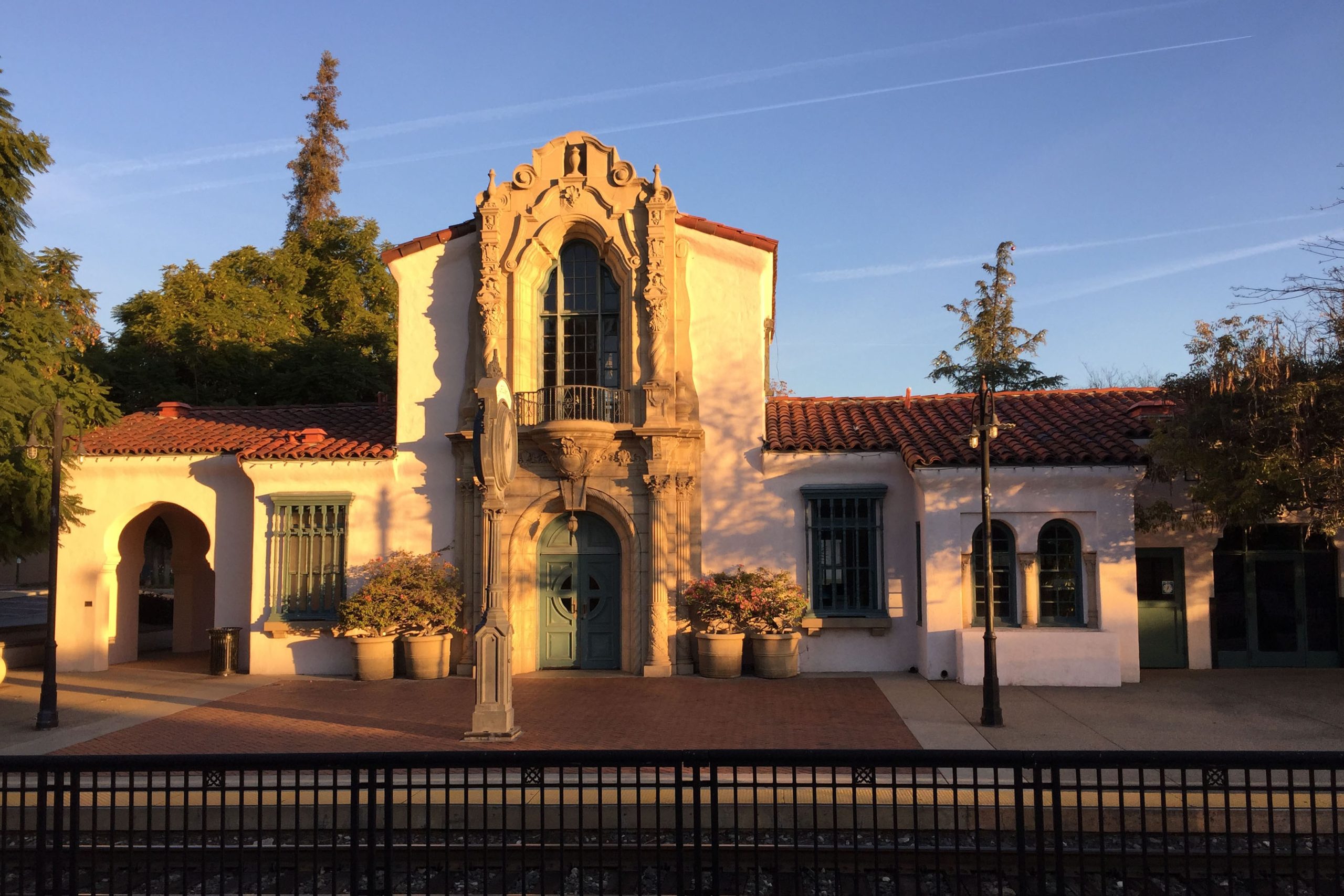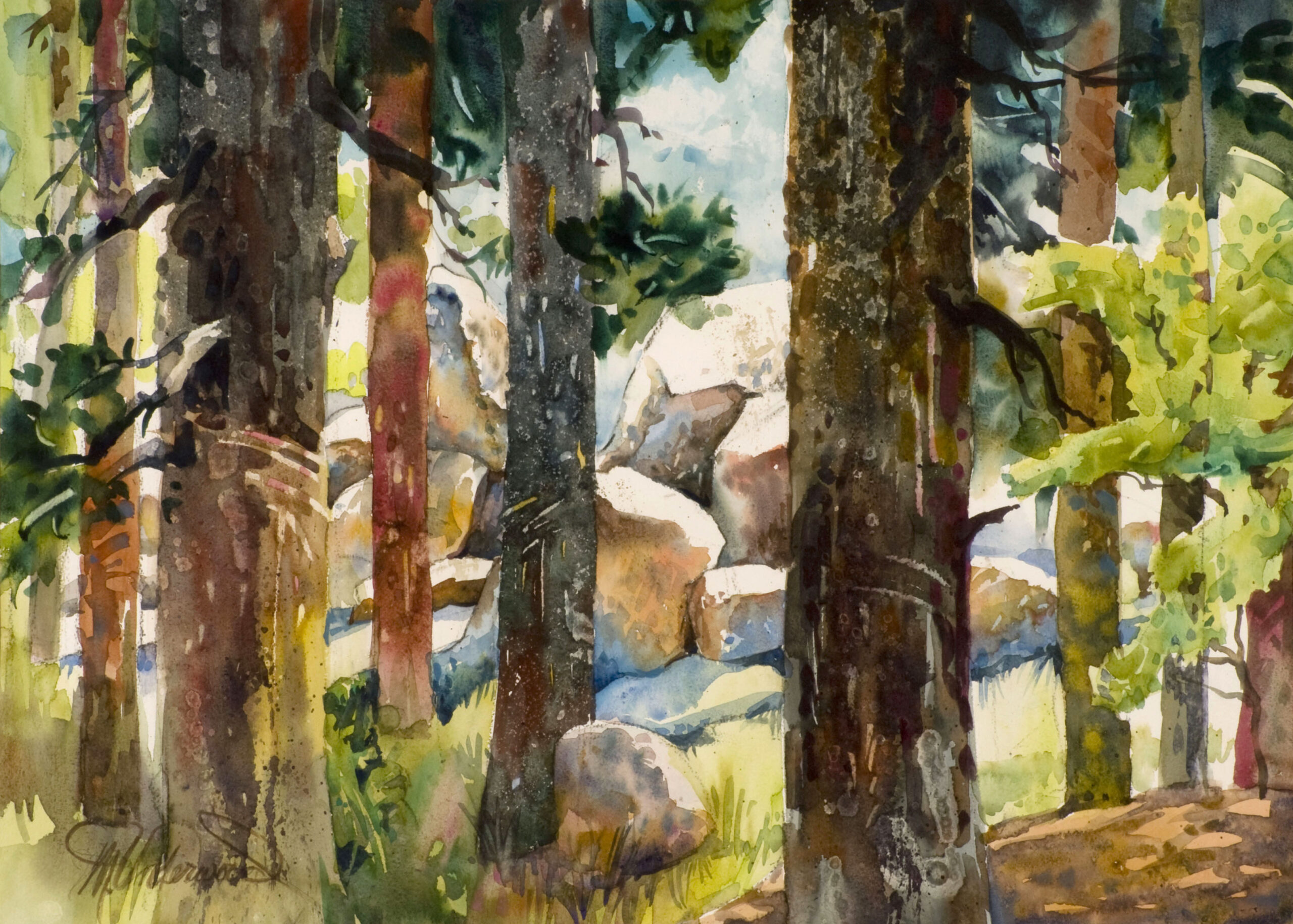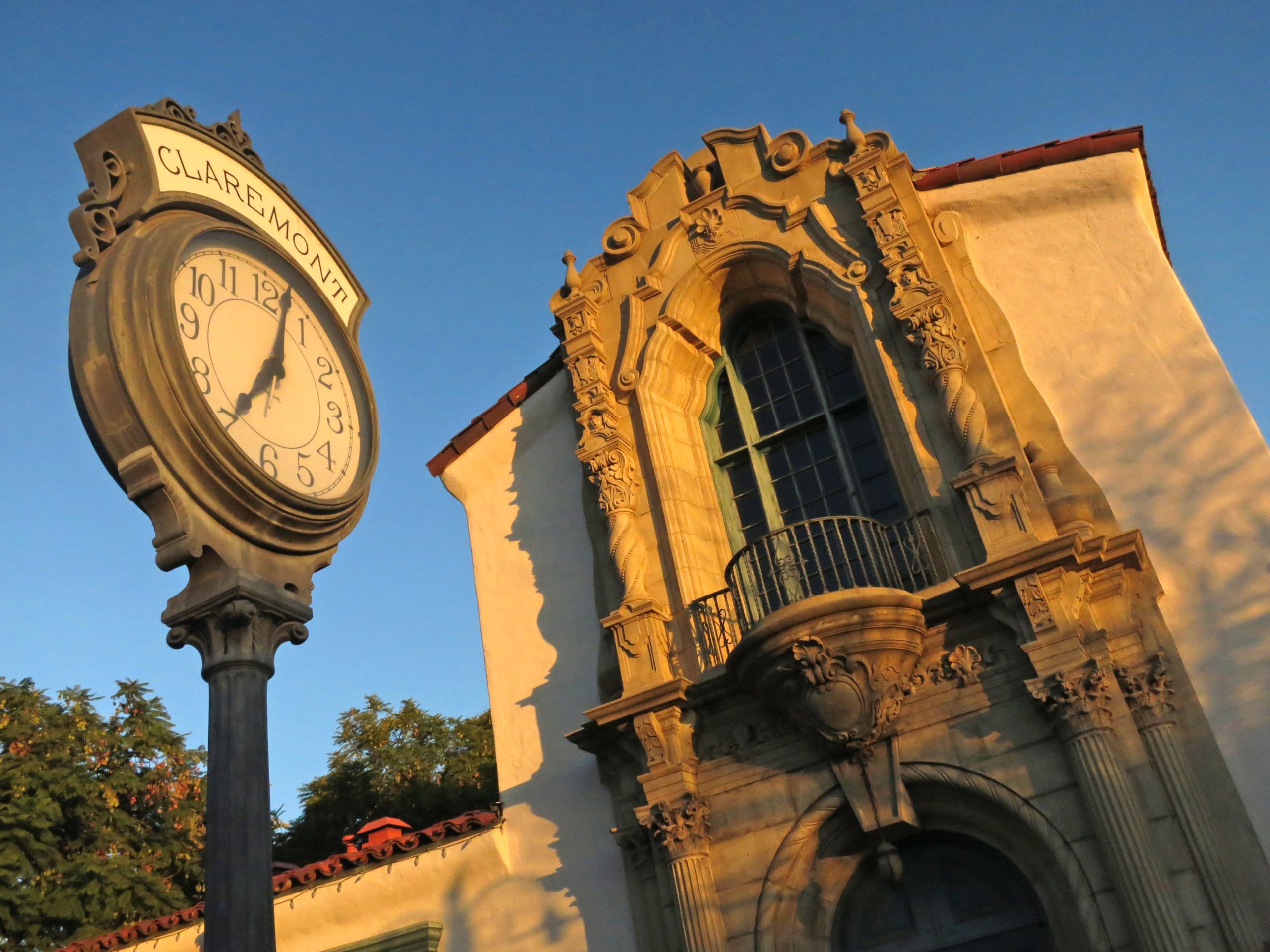Mission
The Museum’s mission is to celebrate the community’s rich artistic legacy and promote the cultural vitality of the region.
About the Museum
The Claremont Lewis Museum of Art was created to inspire, stimulate and enhance the community through education programs, our collection and exhibitions. The Museum seeks to share the transforming experience of art with our diverse audiences. Featuring the work of Claremont area artists, the Museum is open Friday, Saturday, and Sunday, noon to 4:00 pm.
History of the Museum
It all started in 1987 with a comment by Marion (Hoppy) Stewart. The well-known weaver and wife of sculptor Albert Stewart had just returned from a walk with a friend to Claremont’s Padua Hills Theater. Her friend said a museum should be created inside the theater to exhibit the work of Claremont’s many artists.
Stewart conveyed this idea to her other friend, Marguerite McIntosh who—along with her husband, renowned ceramicist Harrison McIntosh—has been part of the city’s arts community for more than 50 years. The remark was enough to prompt Marguerite to seek the support of two former mayors in establishing a museum.
While the theater underwent restoration, another significant historic building came into the picture: the College Heights Lemon Packing House, which had just been saved from demolition and earmarked for renovation into a mixed-used building. Its historic significance and ideal downtown location made it a perfect site for the Claremont Museum of Art. The Museum was incorporated in 2004, and in February 2006, the board formally announced that the Claremont Museum of Art would open in the Packing House. That marked nearly two decades since McIntosh and others began to explore the possibility of creating a museum that would celebrate Claremont’s rich artistic heritage – past, present, and future.
Beyond gaining a visible location, the Museum’s mission expanded as well. In addition to spotlighting the work of Claremont artists in a permanent collection, the board decided to devote the institution’s main gallery to showcasing art from around the nation and world. That decision set the Museum on a trajectory to become a regional museum of international significance.
But the realities of the recession derailed the grand plan and in late 2009, the museum board decided that the museum could no longer afford to maintain a staff and exhibition space. After valiant efforts to raise funds failed, the museum space was closed. David Armstrong, a longtime resident of Claremont and founder of the American Museum of Ceramic Art, provided a substantial cash loan and offered to store the permanent collection for many years. With his support and leadership, funds were raised to pay debts which enabled the Museum to move forward.
From 2010 to 2016, the museum successfully operated as a “museum without walls.” With nearly 300 members, the volunteer organization continued to hold numerous events and programs. CMA presented ten exhibitions in borrowed spaces, held Artful Evenings for members and opened dozens of artists’ studios to the public in OpenART events. The Padua Hills Art Fiesta, held throughout the 1950s, was revitalized and became a popular annual event.
In December 2015, the Claremont Museum of Art entered into a lease agreement with the City of Claremont for the adaptive reuse of the historic Claremont Depot as a small art museum. Thanks to generous and enthusiastic community support, the museum raised over $150,000 and completed renovation of the atrium and one gallery. The Museum opened its new space at the Depot on November 20, 2016.
Local architect, John Bohn, of JBohn Associates, has worked with the Board of Directors since the Museum moved into the historic Claremont Depot. He developed the plans to renovate and restore the Atrium and add a “second skin” to the former Foothill Transit Office to turn it into a gallery, without impacting the original walls of the interior of the historic building. Read more about the historic Claremont Depot at Claremont Heritage Foundation.
Phase 2 campaign raised funds to remodel the final two rooms of the Depot into galleries in 2021-22. The original ceilings were retained and rare 100-year-old plank cedar flooring was revitalized and reinstalled. With high ceilings and expansive wall and floor space, the enlarged Museum reopened in May, 2022. The adaptive reuse of this historic building has been a successful public/private partnership with the City of Claremont, Metro, and the generous support of members and friends.
In 2022, the Museum received a major gift from Randall Lewis and established a significant endowment to ensure continued financial stability. As part of this gift, the name of the museum was changed to the Claremont Lewis Museum of Art. Several part-time staff positions were established and off-site space was rented to store the permanent collection that continues to grow with gifts from local collectors. Executive Director Martin Betz joined the small staff in July, 2023 to plan more robust exhibitions, develop a digital catalog of the collection and expand fundraising.
The final piece of the expansion will reshape the West Portico to incorporate that space into the Museum. The expanded museum has become a catalyst to spur creative thinking, engagement, and innovative programming for the broader community. For more information visit Imagine More Museum.

Claremont’s Rich Artistic Legacy
Art is an enduring part of Claremont’s history and heritage. Known throughout the country as an “art mecca” in the 1940s, 50s, and 60s, Claremont remains an important center of artistic activity. Claremont artists are integral to the cultural fabric of the City, having contributed to its unique identity and personality for more than 70 years.
Centered by the Colleges, Claremont emerged as an important art community in the years following World War II. The film Design for Modern Living: Millard Sheets and the Claremont Art Community 1935–75 reinforced our awareness of the significance of our artistic heritage, a heritage worthy of preservation and presentation to future generations.
Claremont continues to have an active community of artists. Although many artists have homes and studios in neighboring towns, Claremont serves as a hub for area artists in large part because of the presence and reputation of the Claremont Colleges. In the tradition of their predecessors, local artists continue to impact the quality of the social and built environments.

Staff
Executive Director
Martin Betz
Associate Director of Exhibitions and Collections
Seth Pringle
Administrative Manager
Ingrid Borgards
Social Media/Marketing Associate
Xochilt Vargas
Collection Database Archivist
Thea Whitaker
Museum Associates
Gorman Bentley
Gabriela Guzman
Cate Hasler
Britney Liang
Charlie Nwoye
Alex Ofstedahl
Paul Padilla
Doug Pearsall
Xochilt Vargas
Consultants
ARTstART
Rich Deely, Director
McKenna Wood, Project Associate
BOARD OF DIRECTORS
Ryan Zimmerman, President
Sheri Nagel, Vice President
Rae Rottman, Treasurer
Emily Moultrie, Secretary
Susan M. Allen, Ph.D.
Susan Guntner
Juliet Kane
Mary Livesay
Valerie Martinez
Catherine McIntosh
Barbara Brown, Emerita
Marguerite McIntosh, President Emerita
Dr. Janet Myhre, Emerita
Marilyn Ray, Emerita
Elaine Turner, President Emerita
Joseph “Joe” Unis M.D., Emeritus
Mary Weis, Emerita
Harold B. “Hal” Nelson, Special Advisor
Thank you to the many supporters of the Claremont Lewis Museum of Art. Click here to view the Museum’s Supporters page
Culture and Equity and Inclusion
STATEMENT: The Claremont Lewis Museum of Art is committed to serve the public in ways that respect the plurality of our communities. Complete Culture and Equity and Inclusion Statement.

